Leah Pistorius
November 26, 2019
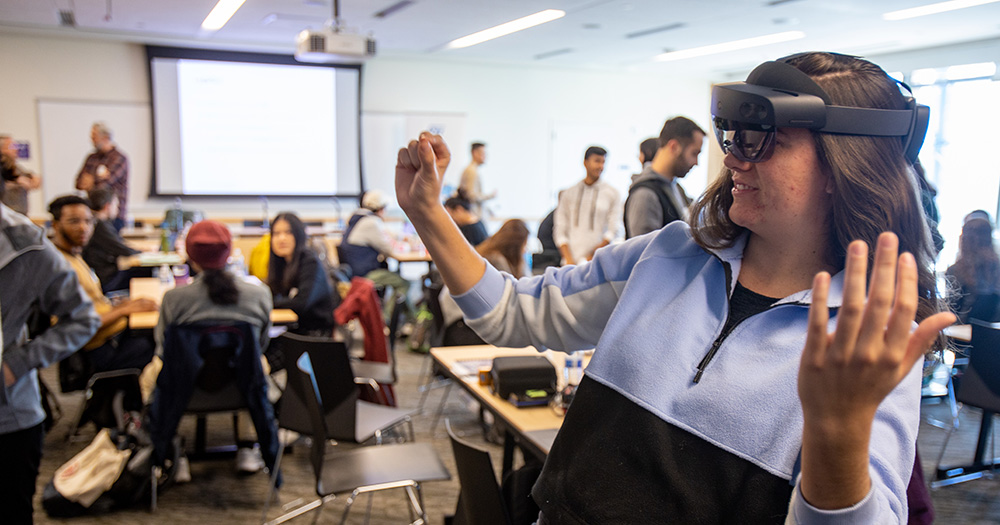
In November 2019, the Department of Human Centered Design & Engineering and partners at STMicroelectronics hosted a special event for students interested in the design and research of augmented and extended realities, or XR.
The half-day event kicked off with a panel discussion of experts working in various industries related to XR. Panelists included Marcelo Mejía Cobo, Microsoft Hololens; Todd Little (UCD '14 & MS '17), Fairworlds; Bharath Rajagopalan, STMicroelectronics; Paul Reynolds, Torch; Sasha Samochina, NASA Jet Propulsion Laboratory; and Jada Williams, Microsoft Mixed Reality.

Moderated by HCDE Lecturer Tyler Fox, the panelists discussed where virtual reality, augmented reality, and mixed reality technologies have evolved from, and where future applications are going.
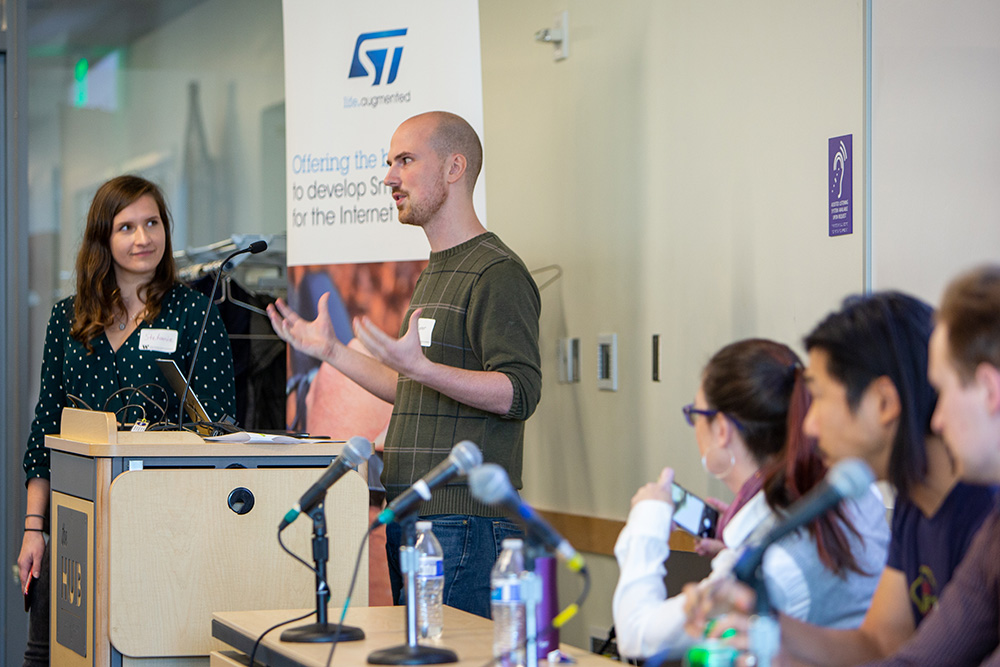
Master's students Stefanie Gueorguieva and Connor O'Toole lead the participants in a Wearable XR Design Jam
After the panel, HCDE master’s students Stefanie Gueorguieva and Connor O'Toole, officers from HCDE’s Graduate Student Association, led students in a three-hour Design Jam. Gueorguieva and O’Toole divided students into small groups and tasked the teams with the prompt: design a wearable XR solution to solve a real-world problem.
“We hoped that participants would be able to gain experience in a new problem space and to challenge themselves with thinking about how they would design interactions using a brand new technology,” Gueorguieva said.

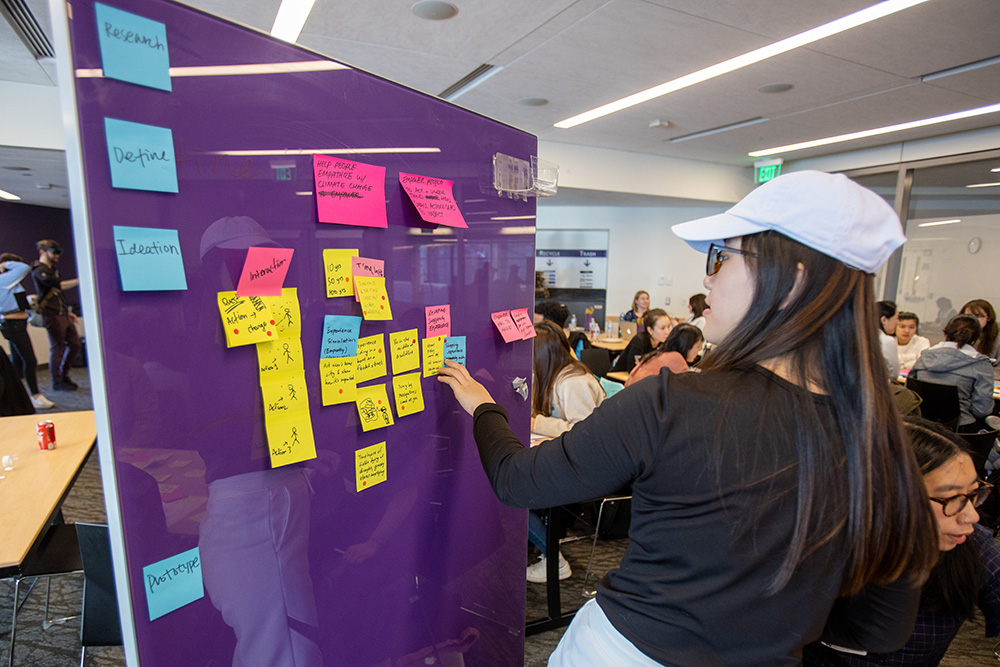

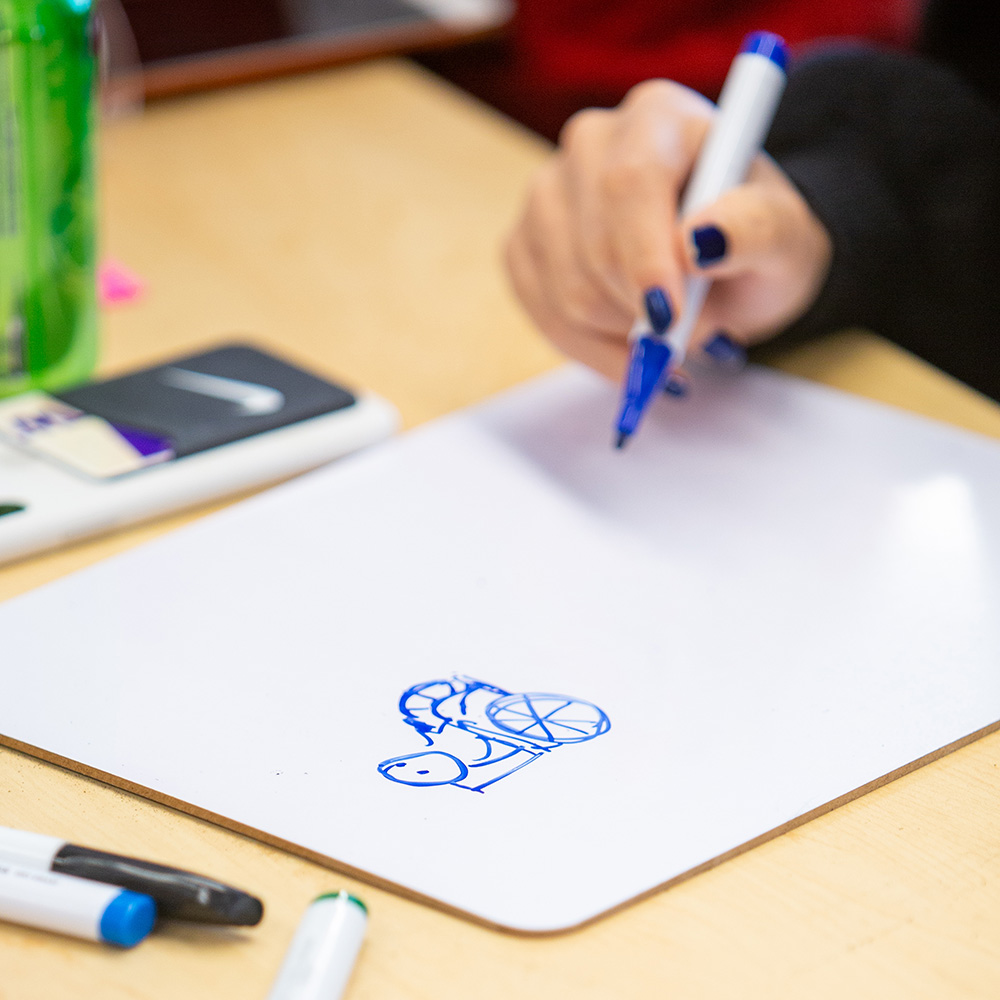

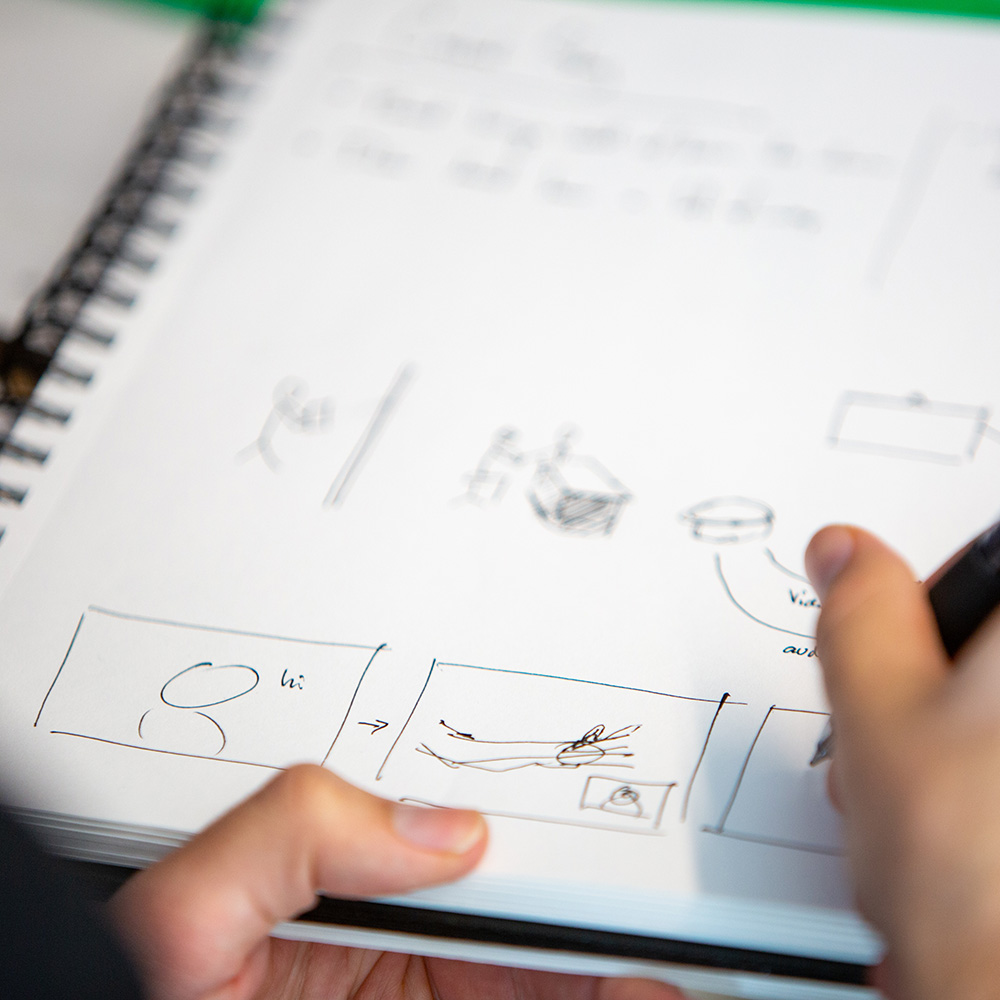
Over the three hours, the students defined a problem that could benefit from an XR innovation, brainstormed features and applications, and developed a presentation to pitch to the rest of the participants.
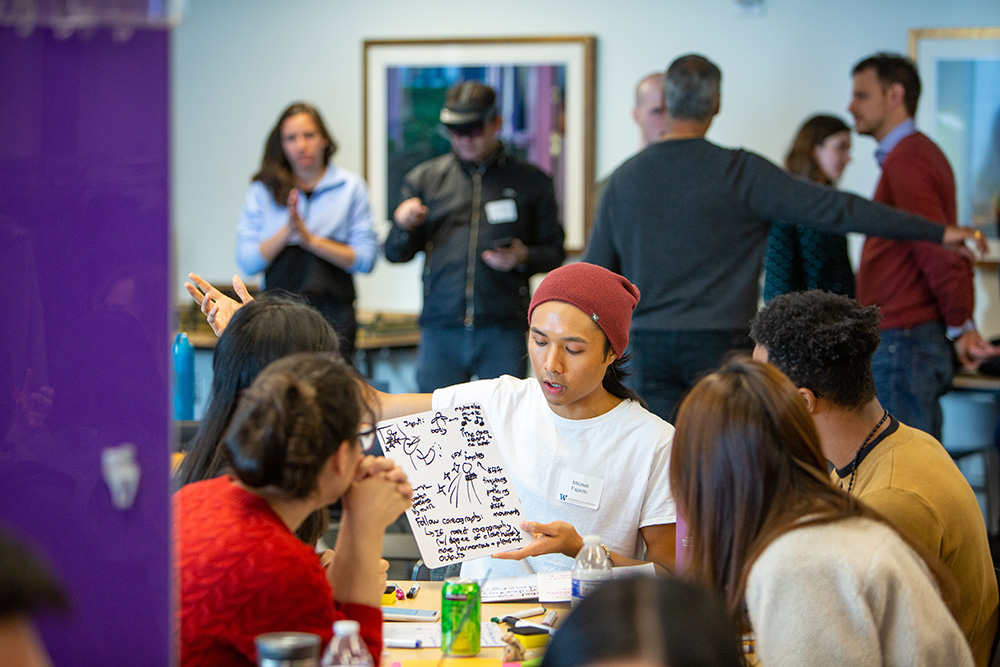
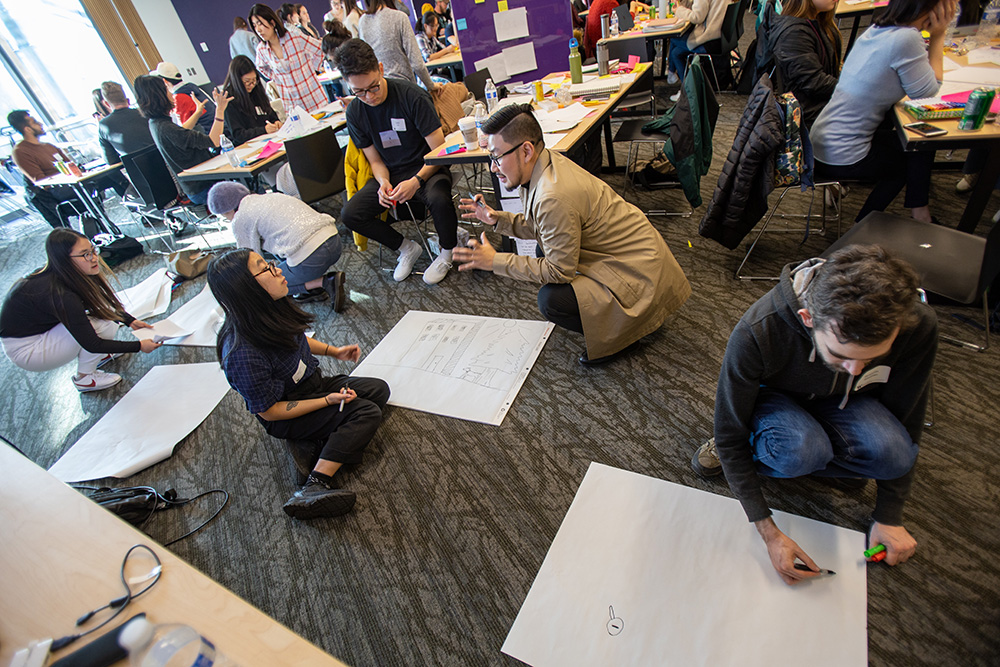
The students were asked to not use any technology in their final presentations, so teams developed a script and used drawings, acting, and simple prototypes to tell the story of their proposed concepts.
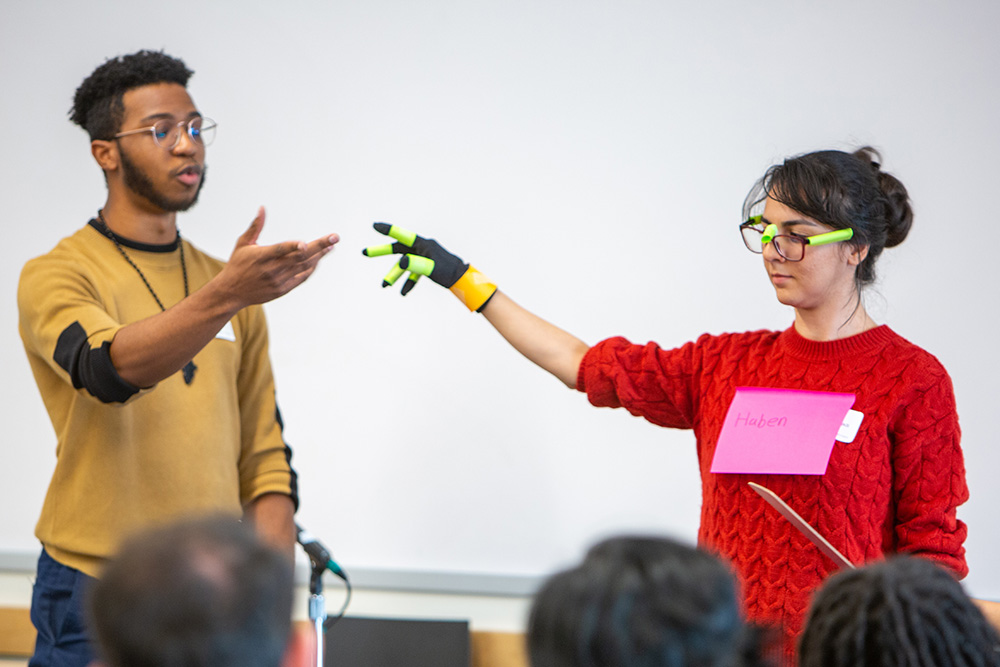
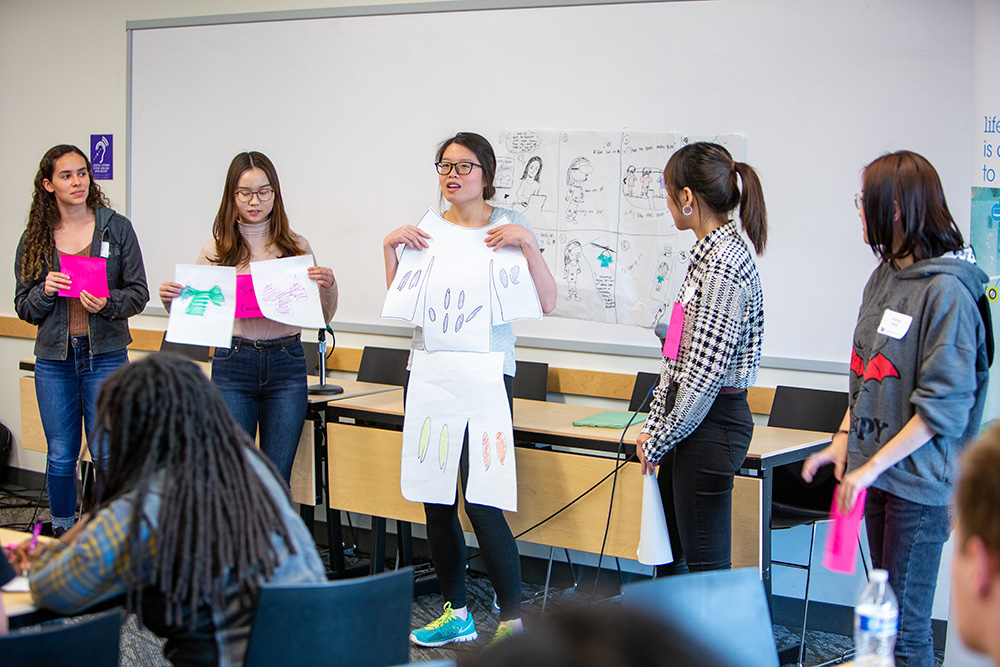
The students presented the following wearable XR concepts:
- A training environment for school bus drivers that simulates common distractions
- An experience that helps patients recover from surgery by encouraging exercises at home
- An application to help people empathize with climate change by visualizing time- and location-based effects
- A game to help parents and children prepare for disaster scenarios
- A real-time coach to improve public speaking
- A tool to help make museums more accessible for people living with physical impairments
- A tool to support young people with ADD and executive dysfunction by helping to envision what the immediate future looks like
- A community-based dance instruction tool for people who are experiencing blindness
- A tool to help doctors connect with each other and with patients in remote medical facilities
- An online immersive and inclusive clothes shopping experience
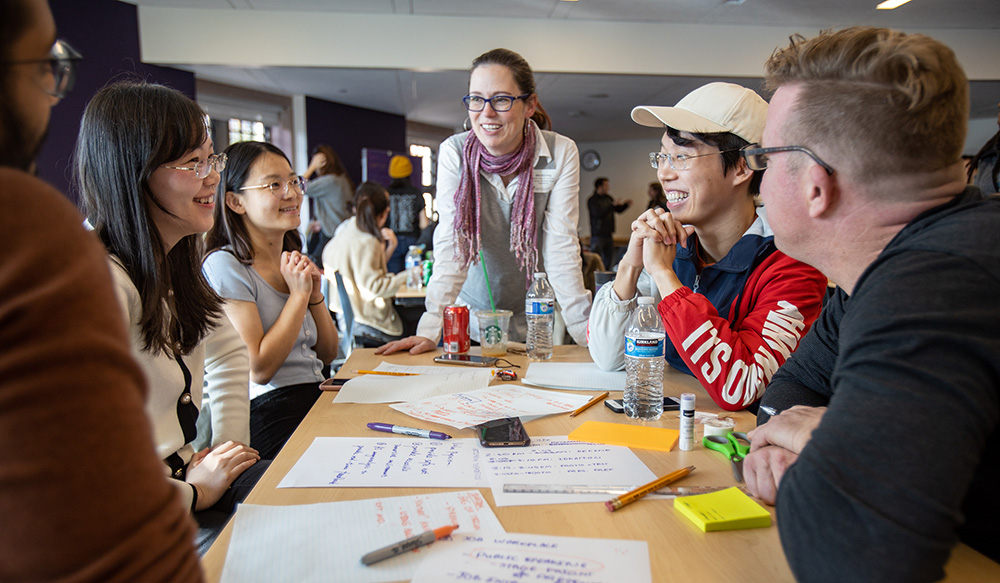
Elin Björling, HCDE principal research scientist, mentors a team during the design jam
Industry mentors provided feedback to the teams throughout the design jam and helped select a winning team, who received prizes provided by STMicroelectronics.

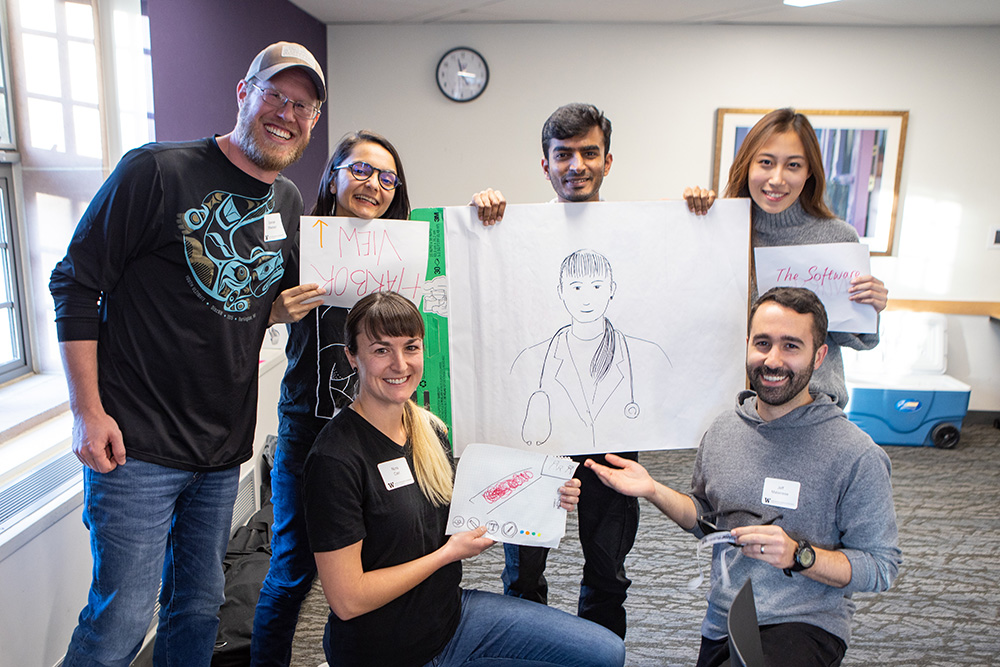
Gueorguieva and O’Toole said the event was encouraging to both hear from the panelists about the many applications where XR can be used to solve current problems, and to see the students identifying innovations spanning a broad range of issues. In particular, they said they are excited to see how XR can be used outside of gaming and into new fields such as education, art, and social interactions.
“Human Centered Design & Engineering can be important in this space due to the newness of the technology,” Gueorguieva and O’Toole agreed. “As XR is used in different fields, more research and design must be done to understand how best to interact with the system and the needs of the user."
SAVE THE DATE:
The Department of Human Centered Design & Engineering and STMicroelectronics present:
XR Day
Exploring the future of XR design and technology
Tuesday, March 3, 2020 @ UW Seattle campus
Tickets on sale January 6, 2020